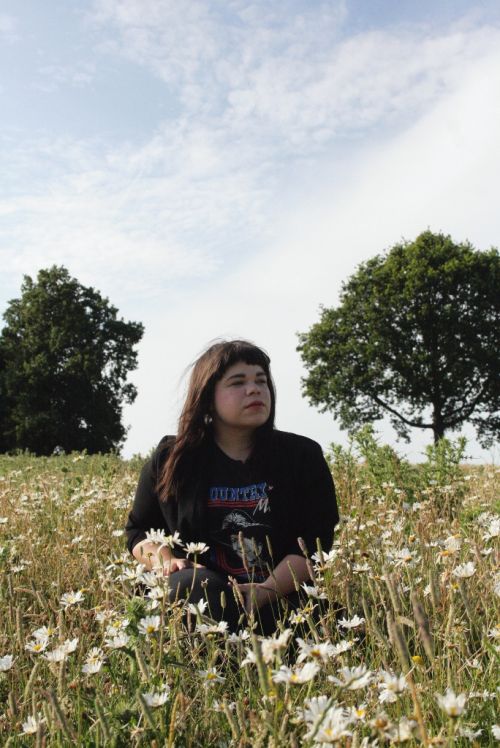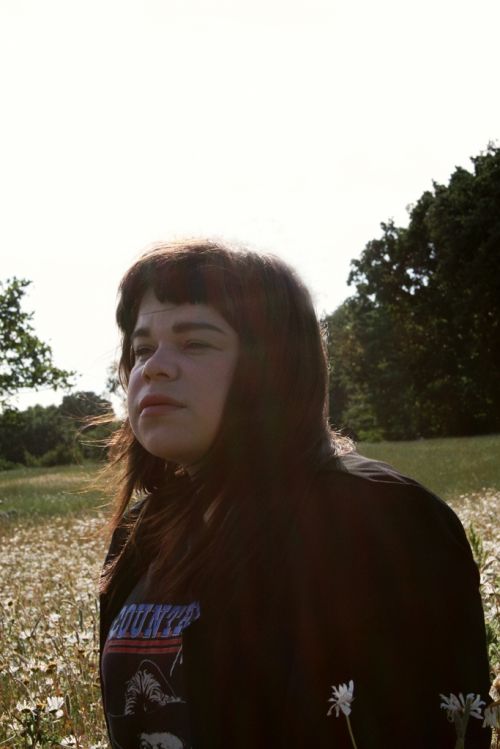What is a modern folk song? The answer could be Killer, the first track on Samantha Crain’s new record Under Branch and Thorn and Tree. Interweaving stories the singer songwriter encountered in the camps of The Occupy Movement, the song carries a political message balancing wearily on an irregular drum beat. How do you deal with war, poverty and ecological meltdown? The road is steep, but Samantha climbs her highest pitch when she calls out “Keep marching!”
With her fourth album, the Oklahoma native wants to reconnect folk music and its political roots with the lives of ordinary people. Songs like Outside the Pale, Kathleen and Killer deals with class, feminism and racial oppression through the everyday stories of complex female characters. By way of empathy, understanding and intricate guitar-led melodies, social injustice is poetically brought to light.
While briefly in London, Samantha meets me for coffee on Hampstead Heath. Surrounded by trees and screaming children, her guitar case resting heavily against the wall instead of her back, we chat about the 99 percent, equality and channelling political frustrations through music.

What did music mean to you when you were growing up?
My dad had a big record collection and played guitar and my grandmother played boogie woogie piano. It was always around and I loved it. I was a loner, and still am in a lot of ways, and music played a big part in my alone time, trying to figure out how to interact with other people and understanding how they felt. I didn’t start playing music until I was 17, so I had a lot of time before that to soak it up. It was a big part of my life as I think it is for most.
What role did writing play?
I used to write poems and short stories from the time I was six or seven years old. In school they once gave us an assignment to write journal entries and I loved it so much that I was doing it on my own. I grew up in a small and boring town. It was very flat and rural and everyone had the same upbringing and ideas. Writing was my way of thinking about the world outside of where I was. I did that until I started writing songs. I found it much more effective to tell a story in three minutes.
How did Under Branch and Thorn and Tree become a political album?
The catalyst for the whole album and its themes was the first song I wrote, Elk City. It’s the story of a single, working class mother and how she has all the odds against her. You can’t completely feel sorry for her because she drinks a lot, but at the same time she has been abandoned and mistreated. It’s a multidimensional look at a woman, which I think is rare in music. Women are either manically happy or depressingly sad and that’s the whole extent of their emotional content, so I felt I had a real opportunity to take that idea and paint women as multidimensional people. To attack sexism you have to change the whole framework for how people think and one way to do that is to start injecting women as whole, equal people in music, movies and TV. Then I wrote Killer, inspired by the Occupy movement…

Were you part of Occupy?
I was actually on tour at the time and I was going from city to city and every time we went to a new city, we would go down to the Occupy park and hang out and talk to people and get an idea of why they were there. I was hearing different stories and most of the people I ended up talking to were women. Killer is universal and doesn’t use a lot of pronoun and could represent anybody involved in the movement or who agrees with it, but in my mind it’s from the perspective of a woman.
Are you intentionally using everyday stories to reach out to more people?
The idea behind the album was to give a voice to people who usually don’t get to share their stories. The majority of those people are everyday working people who don’t have time to sit down and write a song, poem or book because they are working and trying to feed their families. With Elk City and Outside the Pale, I got a glimpse of such stories and felt that it was my responsibility to write it down to get their voices out. And it’s my life too. I wait tables to pay the bills when I go home. I grew up working class, my parents are working class and my friends are all paycheck to paycheck. It’s what I know.
Outside the Pale challenges racism, class and white privilege. How did it come about?
The phrase “outside the pale” or “beyond the pale” originally referred to a fence post and everybody who resided outside of that was considered unclean and immoral. It was basically a poverty line. Bringing that into modern day, it’s ironic how it translates. I find it really interesting how this small group of elite, rich, mainly white men can control what’s moral, right or correct for this giant group of the rest of the world who I feel are more passionate, giving and capable. Outside the Pale is the story of all those people in late night bars talking about The Man and not understanding how this Republic we were supposedly given to elect our own officials and govern ourselves turned into an oligarchy. The song is about those frustrations. It doesn’t deal a whole lot with the answers, because that’s something I and others are still trying to figure out. Sometimes it’s good just to get people on your side and involved in a conversation for a common interest.
What role do you think music plays in politics nowadays?
I think it’s making a comeback, especially in hip hop, but there was a long time when it wasn’t an issue at all. With this album I tried to paint pictures of lives affected by social injustice, because empathy is how people tend to change their minds or get involved. Rock, pop and folk are to a larger extent fed to a middle class population and it’s important to include politics in those types of music, because those are the audiences that have to become more aware of the situation. When music and art removes itself from people’s issues, it just becomes boring and bland... The humanity of music and art pops up when you get to the heart of people.
Samantha Crain’s album Under Branch and Thorn and Tree is out now.
Photos by Mafalda Silva.

